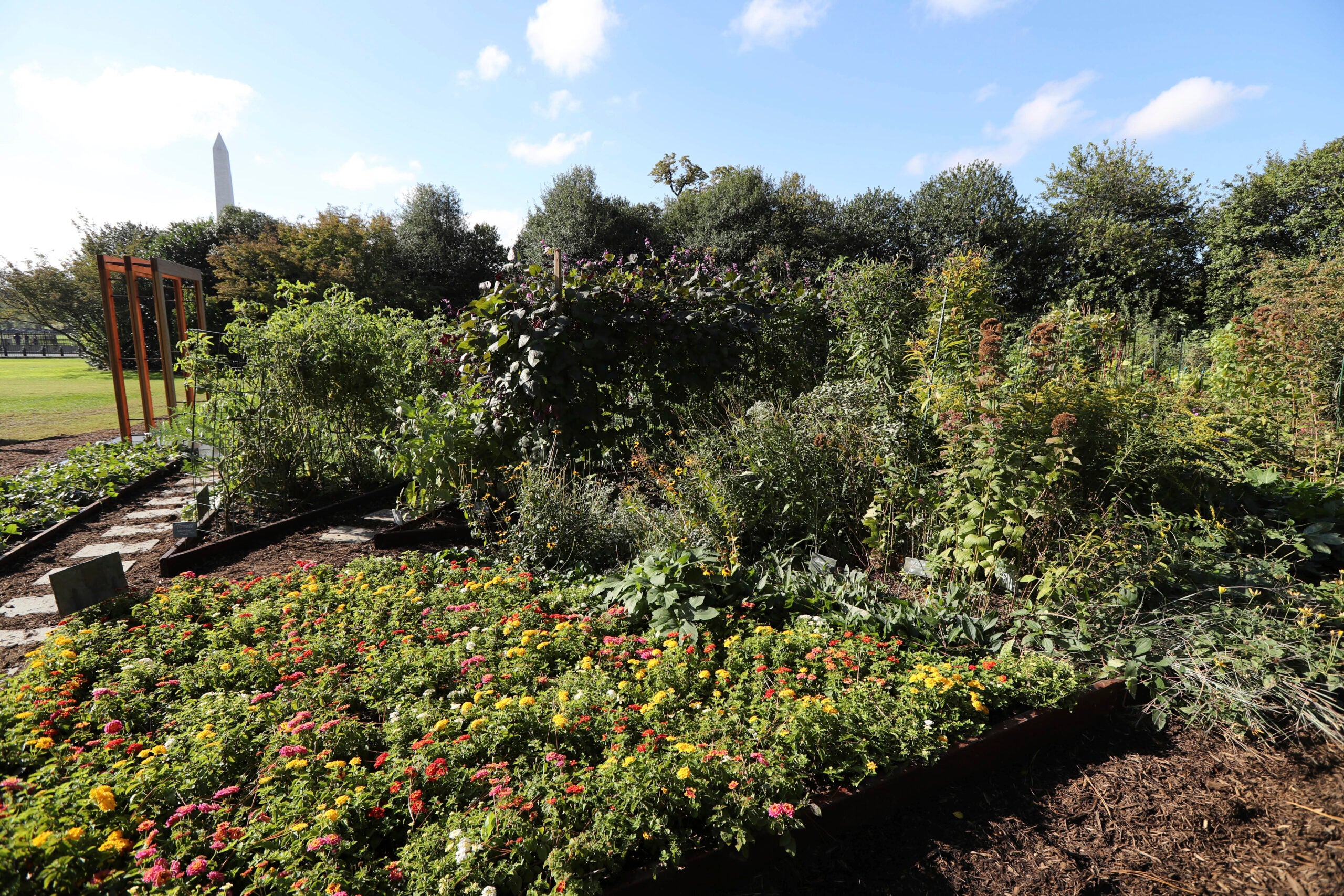This is a very busy time of the year for gardeners. Judith Siers-Poisson learns about the advantages of the straw bale gardening and how to get started.
Featured in this Show
-
Garden Expert: Straw Bales Are ‘Nature’s Perfect Planting Container’
A professional horticulturalist called Joel Karsten has developed a novel method of growing vegetables: using bales of straw.
Karsten, the author of “Straw Bale Gardens: The Breakthrough Method for Growing Vegetables Anywhere, Earlier and with No Weeding,” first encountered the untapped gardening potential of straw bales when he was a child. Growing up on a Minnesota crop and dairy farm, he said he noticed that when straw bales would break, a few months later, there would be thistles growing out of it.
“Even as a little kid,” he said, “I would notice that the biggest, healthiest, tallest, greenest thistles were the ones coming out of these decomposing bales.”
While he never figured it out at the time, the idea stuck with him. Fast-forward a couple of decades, and Karsten was a recent horticulture graduate who had just bought his first house. Unfortunately, he said, the garden came with all of about one-inch of top soil. “As a horticulturalist, you’re not going to garden very much in one inch of top soil,” he said.
Being on a tight budget, raised beds were not an option. So, Karsten decided to experiment with those straw bales from his childhood.
Armed with what he learned as a horticulture major, Karsten figured: “If it will successfully grow thistles and other weeds, why wouldn’t it grow tomatoes and peppers?”
Karsten refers to straw bales as “nature’s perfect planting container.” He explained that the bale is “both the container, and the media that you would normally buy to fill up your container.” So the exterior of the bale holds everything in place, and the straw inside turns first to compost, then to actual new soil.
The bale needs some help to turn into that perfect spot to plant. Karsten’s system involves conditioning the bales for 10 to 12 days with water and fertilizer, which can be either organic or commercial. The purpose of the conditioning, he said, is to provide a food source for the microbes in the bale. They will be doing the work of turning dry, nutrient-poor straw into “black gold.” The conditioning accelerates what would happen in nature.
There are many advantages to planting in virgin soil. Karsten explained that there is no carryover of disease of pests from last season, nor are there weed seeds that often lie dormant in top soil.
One of the advantages of straw bale gardening is that it can allow gardeners to get an early start on the growing season because the conditioned bale is a warmer growing medium than the ground, especially in the spring.
Luckily, Karsten said that it’s not too late to get started, even here at the end of May. But, he said, “I would get started quickly. The summer’s going to pass us by here before we know it, even though it seems like it just got here.”
In fact, getting started now, when the air temperatures are higher, can be an advantage. Karsten said that a gardener that starts conditioning bales in late April isn’t getting a lot of help from Mother Nature.
“That bacteria has to work pretty hard to build up its colony inside that bale, because part of it is trying to keep warm at the same time” he explained.
By comparison, in late May, the warmer temperatures can actually cut the conditioning process from 10 to 12 days down to about eight days. That means that gardeners that start the conditioning process right away could be planting in the first week of June.
For more information on the straw bale gardening method, visit Karstens’ website. He said that thanks to the growing interest in the method, not only is there information from him, but from other gardeners as well.
Episode Credits
- Judith Siers-Poisson Host
- Judith Siers-Poisson Producer
- Joel Karsten Guest
Wisconsin Public Radio, © Copyright 2024, Board of Regents of the University of Wisconsin System and Wisconsin Educational Communications Board.

